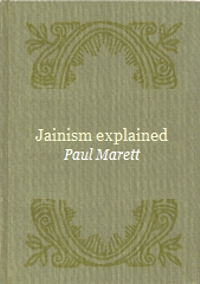 | About: |
Mahavira's Teachings
Jainism is one of the world's oldest religions. Much of its early history is not known, or has come down to us in a form in which historical fact is difficult to distinguish from miraculous stories. However we do know that this ancient religion was passed on to us through the high spiritual genius of one of the greatest religious teachers of all time, Mahavira. We must be clear, from the start, that Mahavira was not the founder of Jainism. What he did was to bring together in a systematic form the beliefs and philosophy of his predecessors, preach them widely throughout his home country, and lay the foundations of an organized Jain 'church' with monks and nuns and lay people following his teachings. The social order which he created has endured to the present day.
Mahavira was not some imaginary being. He was a real man, and we know, with reasonable certainty, that his life on earth ended just over 2500 years ago, in 527 B.C. We know details of his life. He was born in 599 B.C. into a family of the ksatriya, or knightly, caste. His father, Siddhartha, was a prince or lord, and his mother, Trisala, also came from a noble family. His birthplace is believed to have been near the modern city of Patna, in Bihar in north‑eastern India. Although generally referred to as Mahavira (which means 'great hero'), his original name was Vardhamana. Until his late twenties he doubtless led a life not very different from that of any other young man in his level of society.
Both his parents were followers of the religious teachings of Parsva, the 'fourfold teaching', chaturyama dharma, abstention from violence, theft, untruth and acquisitiveness. We should nowadays call them Jains. Parsva, who had lived some 250 years before Mahavira, is recognize as the twenty‑ third Tirthankara or prophet of Jainism. It was shortly after his parents' death that Vardhamana, or Mahavira, decided at the age of thirty to renounce a worldly life. He gave up all his possessions, even his clothes, and lived for the next twelve years a life of great hardship, training himself to endure the pains and discomforts of the body until he became indifferent to them. The wandering ascetic, seeking knowledge alone in the wilder places, or in company with fellow seekers for truth, was (and still is) an accepted figure on the edge of Indian society.
| |
| Author: | Dr. Paul Marett |
| Publisher: | Jain Samaj Europe (Leicester) |
| Editor: | Dr. Natubhai Shah |
| Translator: | |
| Edition: | 1985 |
| Read online: | Jainism Explained |
| Bookshop: | |
| Pages: | 96 |
| Dimensions: | |
| Weight: |